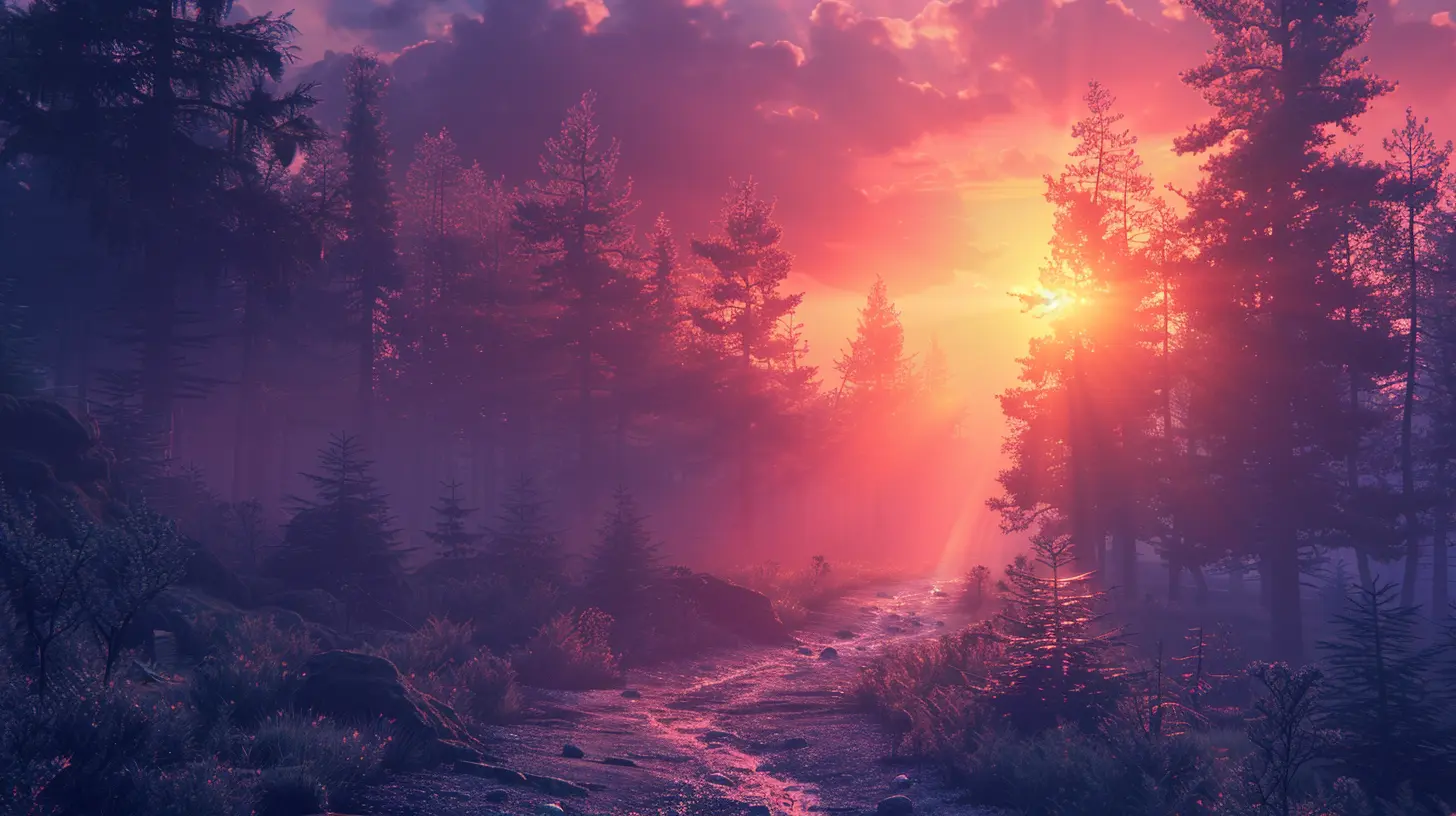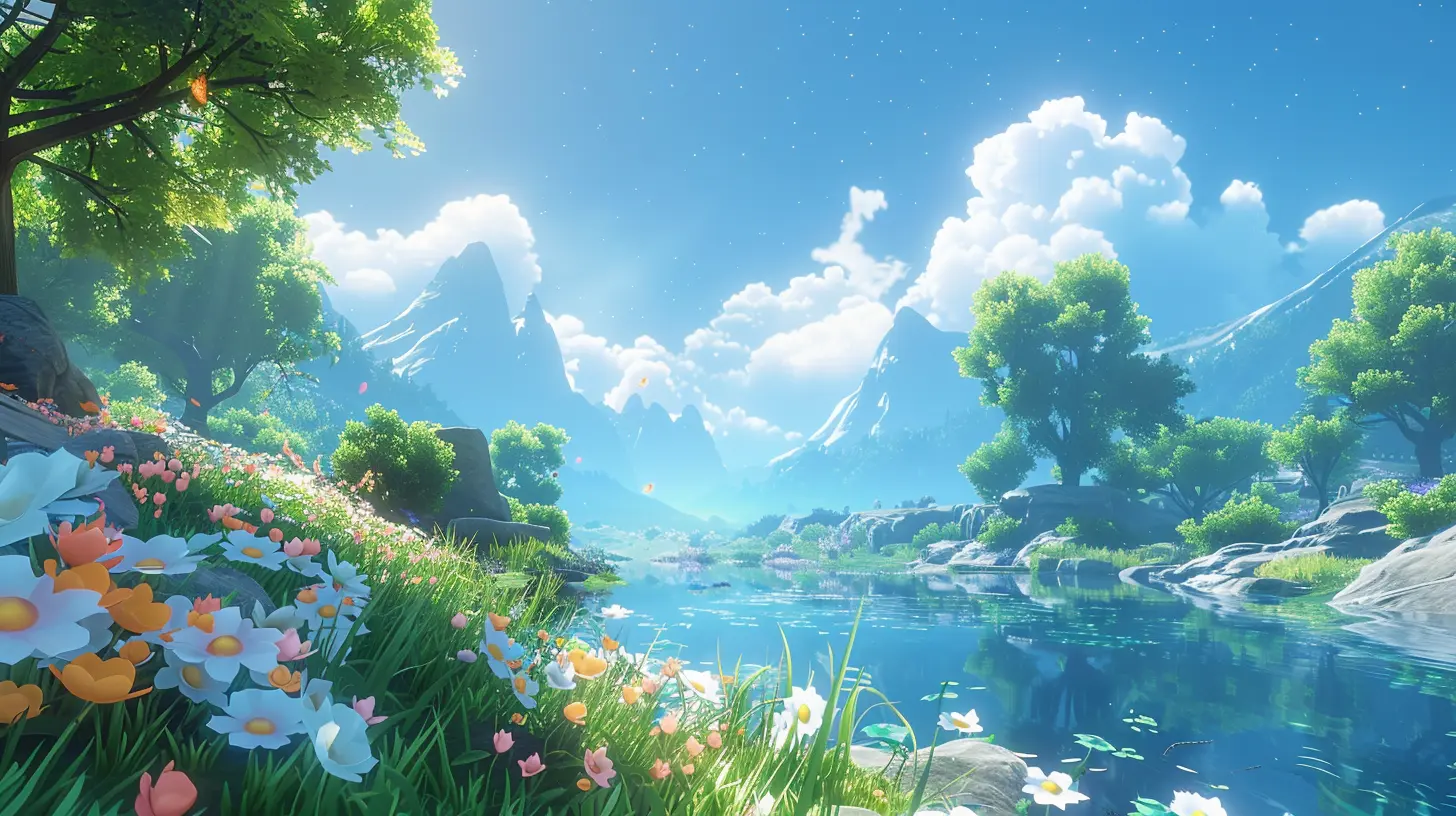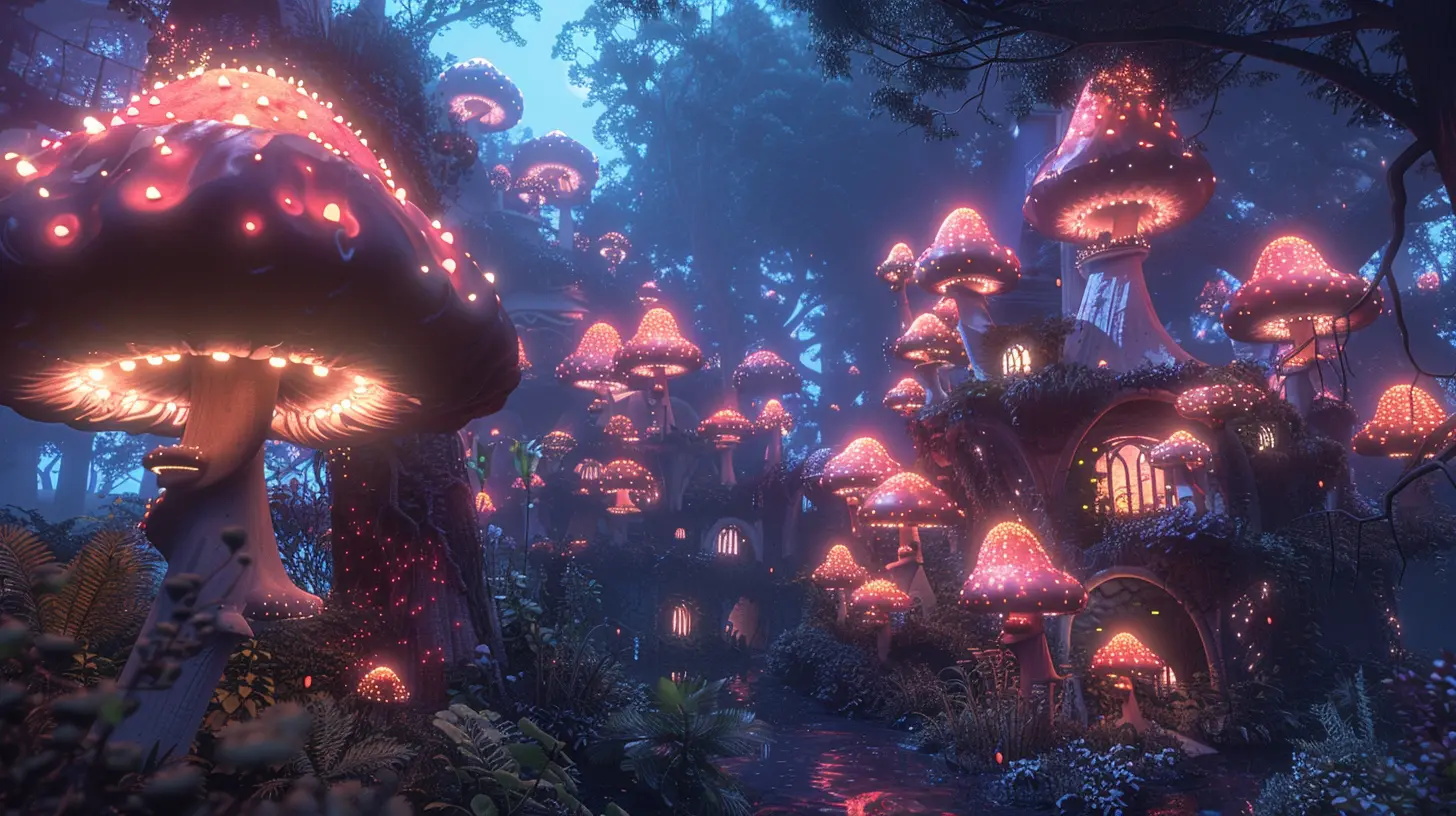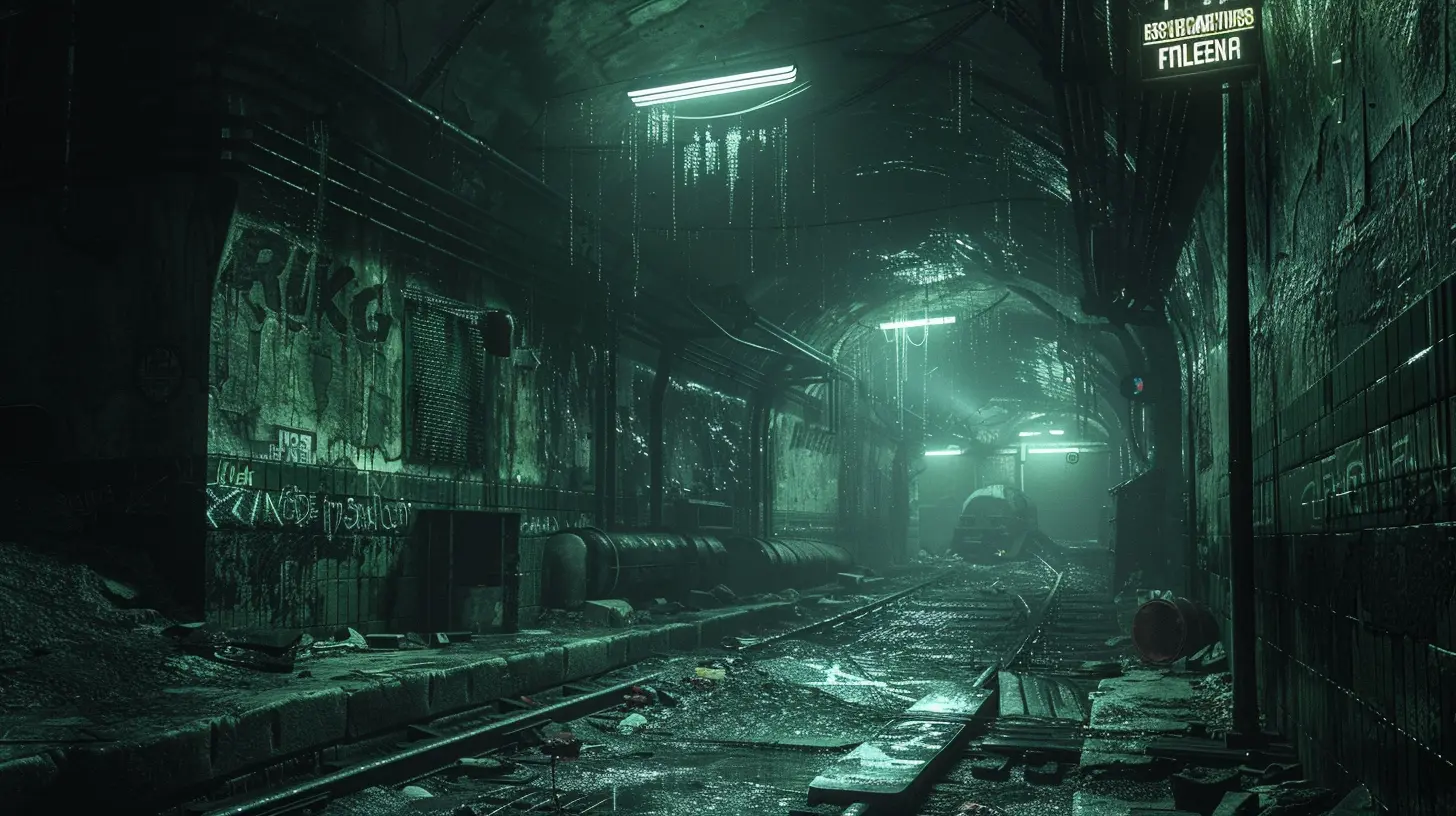The Role of Lighting in Creating Immersive Game Worlds
28 August 2025
Ever walked through a dark corridor in a game, heart pounding, unsure of what’s around the corner—all because of the lighting? That’s the magic of game lighting. It’s not just about seeing where you're going; it’s about feeling something. Whether it’s fear, excitement, or awe, lighting is the unsung hero behind those goosebumps and jaw-dropping moments. Let’s dive deep into how lighting helps build immersive game worlds and why it’s one of the most powerful tools in a game developer’s toolkit.

Why Lighting Is Way More Than Just Illumination
Let’s get one thing straight—lighting in games isn’t just about making things visible. It’s about setting a mood, guiding your attention, and breathing life into pixels. It's storytelling through shadows and spotlights, subtly whispering, "Look here," or "Be careful there."Think about how sunlight drifting through broken windows in an abandoned mansion instantly sets a creepy tone. Or how neon lights in a cyberpunk city spark a sense of futuristic energy. That’s lighting doing its thing, creating an atmosphere that speaks louder than words.

The Psychology Behind Lighting: Feelings Without Words
Lighting can manipulate emotion without saying a single word—kind of like a silent film with a really good soundtrack. Let’s break it down.- Warm lighting (like orange and yellow tones)? It evokes comfort, coziness, safety.
- Cold lighting (think blues and greens)? It evokes mystery, loneliness, or even fear.
- High contrast lighting creates tension and suspense (hello horror games).
- Soft, diffused light tends to calm us down and give a sense of serenity.
Game developers know this, and they use it like a painter uses their brush—every glow, shadow, and beam is deliberate.

Lighting Isn’t Just Emotional—It’s Directional Too
Have you ever noticed how your eyes naturally follow the light in a scene? That’s no accident. Game designers use lighting to guide players through levels without slapping a blinking arrow on the screen.For example:
- A softly lit doorway in the distance suggests, "This way."
- A shadowy corner? Maybe something’s hiding there.
- A bright spotlight? Probably something important, maybe even loot.
It’s a subtle form of level design that keeps the player on track without breaking immersion.

Types of Lighting in Games (And They All Matter)
Let’s geek out for a second and break down the main types of game lighting—because they all have unique roles to play.1. Ambient Lighting
The MVP of atmosphere. Ambient lighting is the general light in a scene. It doesn’t come from any visible source, but it sets the mood overall. Imagine the soft, eerie glow of a foggy forest at night. That’s ambient lighting doing its job.2. Directional Lighting
Pretend the sun or moon is just another in-game character. Directional lighting mimics global light sources. It’s consistent across a scene and casts shadows based on the angle—perfect for creating time-of-day effects like sunrise or dusk.3. Point Lighting
This is like a light bulb hanging in a room. It radiates in all directions from a single point. It’s great for torches, lamps, or glowing magical orbs.4. Spot Lighting
Spotlights focus light in a specific direction—great for flashlights in horror games or streetlamps in gritty urban settings.5. Volumetric Lighting
Ever see “god rays” shining through trees or windows? That’s volumetric lighting. It adds a 3D feel to light, making it more tangible and, let’s face it—just plain cooler.6. Dynamic Lighting
This is interactive lighting. Think of your flashlight moving with you or explosions lighting up a room. It’s reactive, real-time, and ramps up immersion.Lighting in Game Genres: Custom Tailored Magic
Lighting isn’t a one-size-fits-all kind of deal. It’s genre-dependent. Let’s run through some popular game types and how lighting plays a different role in each.Horror Games: Shadows Do the Heavy Lifting
Remember that one hallway you didn’t want to walk down? Yep. That’s lighting creating tension. In horror games, lighting is the star of the show. Minimal light, flickering bulbs, and pitch-black rooms ratchet up the fear factor. It forces players to imagine the worst behind every angle.Fantasy RPGs: Light As Enchantment
Think glowing spell books, radiant auras, majestic sunrises over mountains. Lighting in fantasy settings often represents magic and wonder. It’s used to highlight magical artifacts, epic landscapes, and divine presences.Shooters: Clear Visibility with Emotional Punch
In FPS or battle royale games, lighting helps balance gameplay and mood. Maps are often well-lit for visibility, but dynamic weather or time-of-day cycles (like golden hour lighting during a sniper match) can shift a mission’s emotional tone fast.Puzzle and Platformers: Guiding the Player
In these games, lighting often acts as a nudge. It subtly points you to what’s important—maybe the exit, a switch, or an object you missed. Good lighting in puzzle games keeps frustration low and flow high.
Realism vs. Stylization: Where Lighting Gets Creative
Here’s a juicy question: Should lighting be realistic or stylized? The answer? It depends on the vision.- Realistic lighting uses physical properties of light (like ray tracing) to simulate real-world behavior. It’s immersive, but technically demanding.
- Stylized lighting is more playful—it supports the game’s art style, even if it's not scientifically accurate. Think cel-shaded games like Zelda: Breath of the Wild.
Both work. It just depends on what kind of world you want to create.
Ray Tracing: The Game-Changer Lighting Tech
We can’t talk about lighting in games without nerding out over ray tracing. This tech simulates the way light bounces and reflects in the real world. The result? Hyper-realistic scenes with accurate shadows, reflections, and global illumination.It’s like going from a flashlight under your chin to full Hollywood cinema lighting.
Games like Cyberpunk 2077 and Control have shown how ray tracing can completely transform the vibe of a game. It’s lighting on steroids.
Dynamic Lighting: Making Worlds Feel Alive
Ever noticed how the mood in a game shifts when the weather changes or the sun sets? That’s dynamic lighting flexing its muscles. It reacts to time, movement, explosions, and environment changes in real time.- Day turns to night? Spooky!
- Lightning strikes during a storm? Terrifying and beautiful.
- Fire from a dragon? Burnt orange glow everywhere.
Dynamic lighting makes the game world feel like it’s breathing—changing with your actions.
Lighting As Storytelling: Yes, Really
Lights can tell stories. Don’t believe me? Think about this:🎮 You're exploring a war-torn city. The power is out, but you find one room with a flickering, still-functioning TV. Doesn’t that make you wonder who was there last? What happened?
Lighting becomes a narrative tool. It draws your attention to clues, deepens character development, and conveys plot without a single line of dialogue.
Quick Examples:
- Red lighting = danger/boss fight incoming.- Soft spotlight on a fallen character = reverence, mourning.
- Sudden blackouts = jump scare or narrative twist.
Game designers use lighting as a silent narrator, always whispering in your ear.
Common Lighting Mistakes That Ruin Immersion
Even the best games can stumble with lighting. Here’s what devs try to avoid:- Overexposure: Too much light kills mood and detail.
- Flat lighting: No shadows = no depth. Boring.
- Inconsistent lighting: Distracting and breaks immersion.
- Poor shadow performance: Shadows that don’t match the light source? Yikes.
Getting lighting right is a balancing act of tech and art.
How Players React to Great Lighting (Even If They Don’t Notice)
Here’s the thing—most players don’t consciously notice good lighting. But they feel it. They feel the tension in a shadowy cave or the warmth of a sunlit village. That emotional response is rooted in how the lighting makes them feel, even if they can’t articulate it.Some of the most memorable game moments? Yeah, lighting helped make those stick.
Final Thoughts: Lighting Is the Soul of Game Design
If the gameplay is the heartbeat of a game, lighting is the soul. It defines the mood, tells the story, guides the player, and makes virtual worlds feel alive. Whether it’s a beam of sunlight slicing through tree branches or a single lantern illuminating a dark, ancient hallway—lighting is what breathes life into digital spaces.So, the next time you’re completely immersed in a game and can’t look away—thank the lighting team. They’re the hidden artists painting with light and shadow.
all images in this post were generated using AI tools
Category:
Video Game GraphicsAuthor:

Tayla Warner
Discussion
rate this article
1 comments
Diana McGlynn
Lighting is more than just illumination; it's a narrative tool that shapes mood, guides players, and reveals secrets. Thoughtfully designed lighting enhances immersion, transforming environments into living worlds where every shadow and ray of light tells a story. Embrace the art of lighting!
August 29, 2025 at 4:42 AM

Tayla Warner
Absolutely! Lighting is pivotal in crafting immersive experiences, as it not only illuminates but also influences emotions and narrative flow, enriching the player's connection to the game world.


